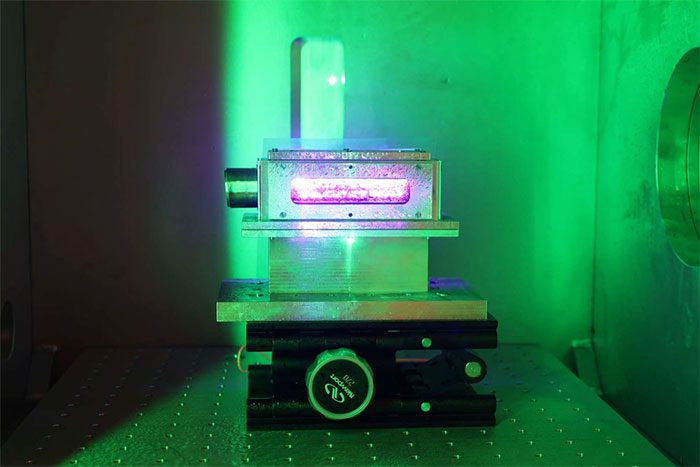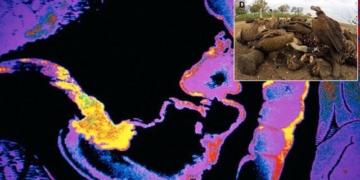Researchers Successfully Develop a Compact Particle Accelerator Capable of Producing 10 GeV Beam. This device could pave the way for applications in medicine and electronics.
Particle accelerators are devices that use electromagnetic fields to generate and accelerate charged particle beams, such as electrons, protons, and ions, which are at atomic or subatomic scales.

A section of the particle accelerator filled with gas, measuring 10cm, is used to accelerate particles to 10 GeV. (Photo: University of Texas).
Typically, particle accelerators require tunnels several kilometers long. The world’s largest particle collider at CERN (a massive physics laboratory located in a tunnel at the border of France and Switzerland) is 27 km long.
Researchers at the University of Texas (USA) have successfully set a new energy record with their compact particle accelerator.
Nanoparticles Freeing Electrons
According to the researchers, the secret to achieving such a small size lies in the use of nanoparticles. To illustrate how this device works, the research team compares the laser beam to a boat on a lake, generating ripples as it moves.
Electrons ride these waves, similar to how a jet ski helps a surfer catch large waves; nanoparticles release electrons at just the right time and place.
They utilized the Texas Petawatt Laser Laboratory at the University of Texas, which can help the laser reach petawatt energy levels, to test their system.
The research team demonstrated that they successfully generated a 10 GeV electron beam (billions of electron volts) with a particle accelerator only 20 meters long. For comparison, the particle accelerator capable of achieving such power in the United States is 3 km long.
Moving forward, the scientists are continuing to research another type of laser for the system, one small enough to be placed on a table and generate thousands of pulses per second.
If the research team succeeds in this improvement, the new particle accelerator could reach hundreds of trillions of electron volts, equivalent to the particle acceleration received from 10 million lightning strikes.
This device could be applied to test the radiation resistance of electronic devices used in space or to develop new cancer treatment therapies and advanced medical imaging techniques.


















































